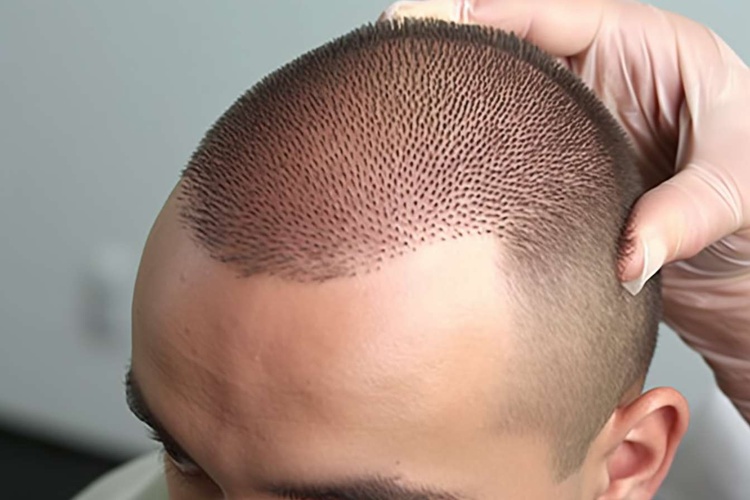Understanding Scalp Psoriasis in the United States: Information and Living Considerations
Scalp psoriasis is a common skin condition affecting many Americans, characterized by red, itchy, and scaly patches on the scalp. This chronic autoimmune disorder can significantly impact an individual's quality of life, causing physical discomfort and emotional distress. In the United States, where approximately 7.5 million people have psoriasis, understanding the nuances of scalp psoriasis is crucial for effective management and treatment.

What Are the Common Symptoms of Scalp Psoriasis?
Scalp psoriasis presents with distinct symptoms that can vary in severity from person to person. The most common signs include:
-
Red, raised, inflamed areas on the scalp
-
Silvery-white scales or plaques that may shed
-
Intense itching, which can lead to scratching and further irritation
-
Dry scalp that may crack and bleed
-
Temporary hair loss in severe cases due to excessive scratching or inflammation
These symptoms can extend beyond the hairline, affecting the forehead, back of the neck, and around the ears. In some cases, the entire scalp may be covered, causing significant discomfort and affecting daily activities.
What Are the Most Effective Treatment Options in the USA?
Treatment for scalp psoriasis in the United States typically follows a step-by-step approach, starting with milder options and progressing to more intensive therapies if needed. The most effective treatment options include:
-
Topical treatments: Over-the-counter and prescription corticosteroids, vitamin D analogues, and tar-based products are often the first line of defense.
-
Medicated shampoos: Containing ingredients like salicylic acid or coal tar, these can help reduce scaling and inflammation.
-
Systemic medications: For moderate to severe cases, oral or injectable medications that work throughout the body may be prescribed.
-
Phototherapy: Controlled exposure to ultraviolet light can slow skin cell growth and reduce inflammation.
-
Biologics: These newer, targeted therapies can be highly effective for severe cases that don’t respond to other treatments.
It’s important to note that treatment efficacy can vary, and a combination of therapies may be necessary for optimal management.
Possible Triggers for Flare-Ups
Understanding and avoiding triggers is crucial for managing scalp psoriasis. Common triggers in the United States include:
-
Stress: High-stress lifestyles common in many American cities can exacerbate symptoms.
-
Weather changes: Extreme temperatures and low humidity, particularly in winter months, can trigger flare-ups.
-
Infections: Strep throat and other infections can activate the immune system and worsen psoriasis.
-
Certain medications: Beta-blockers, lithium, and some antimalarial drugs may trigger or worsen symptoms.
-
Skin injuries: Cuts, scrapes, or sunburns can lead to new psoriasis patches through the Koebner phenomenon.
-
Alcohol and smoking: These habits, prevalent in some US demographics, can increase the risk and severity of psoriasis.
Identifying personal triggers through careful observation and possibly keeping a symptom diary can help individuals better manage their condition.
How Can You Manage Scalp Psoriasis at Home?
While medical treatments are often necessary, there are several strategies Americans can employ at home to manage scalp psoriasis:
-
Gentle hair care: Use lukewarm water and avoid harsh shampoos or excessive scrubbing.
-
Moisturize: Keep the scalp hydrated with fragrance-free, hypoallergenic moisturizers.
-
Stress reduction: Practice stress-management techniques like meditation or yoga.
-
Diet modification: Some individuals find relief by avoiding inflammatory foods and increasing intake of omega-3 fatty acids.
-
Careful styling: Avoid tight hairstyles and harsh chemical treatments that can irritate the scalp.
-
Sun exposure: Controlled, moderate sun exposure can help, but be cautious to avoid sunburn.
-
Scalp massage: Gentle massage can help loosen scales and improve blood circulation.
These home management strategies, when combined with prescribed treatments, can significantly improve the quality of life for those with scalp psoriasis.
Comparison of Scalp Psoriasis Management Approaches
| Management Approach | Pros | Cons | Estimated Cost Range |
|---|---|---|---|
| Topical Treatments | Easy to apply, fewer side effects | May be messy, time-consuming | $10 - $100+ per month |
| Systemic Medications | Effective for severe cases | Potential serious side effects | $500 - $3000+ per month |
| Phototherapy | Can be done at home or clinic | Time-consuming, potential skin damage | $100 - $300 per session |
| Biologics | Highly effective for severe cases | Expensive, requires injections | $10,000 - $30,000+ per year |
| Home Remedies | Low cost, natural options | Limited effectiveness for severe cases | $5 - $50 per month |
Prices, rates, or cost estimates mentioned in this article are based on the latest available information but may change over time. Independent research is advised before making financial decisions.
Living with scalp psoriasis in the United States presents unique challenges, but with proper understanding and management, individuals can effectively control their symptoms and improve their quality of life. By working closely with healthcare providers, identifying triggers, and exploring various treatment options, those affected by scalp psoriasis can find relief and maintain healthier scalps. Remember that psoriasis management is often a journey of trial and error, requiring patience and persistence to find the most effective combination of treatments and lifestyle adjustments.
This article is for informational purposes only and should not be considered medical advice. Please consult a qualified healthcare professional for personalized guidance and treatment.




